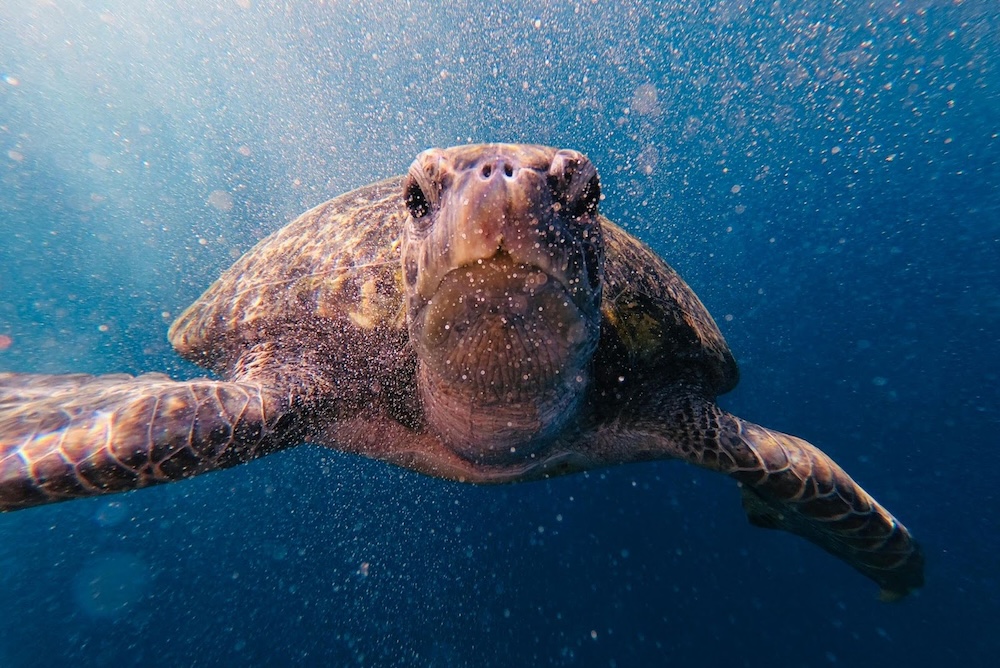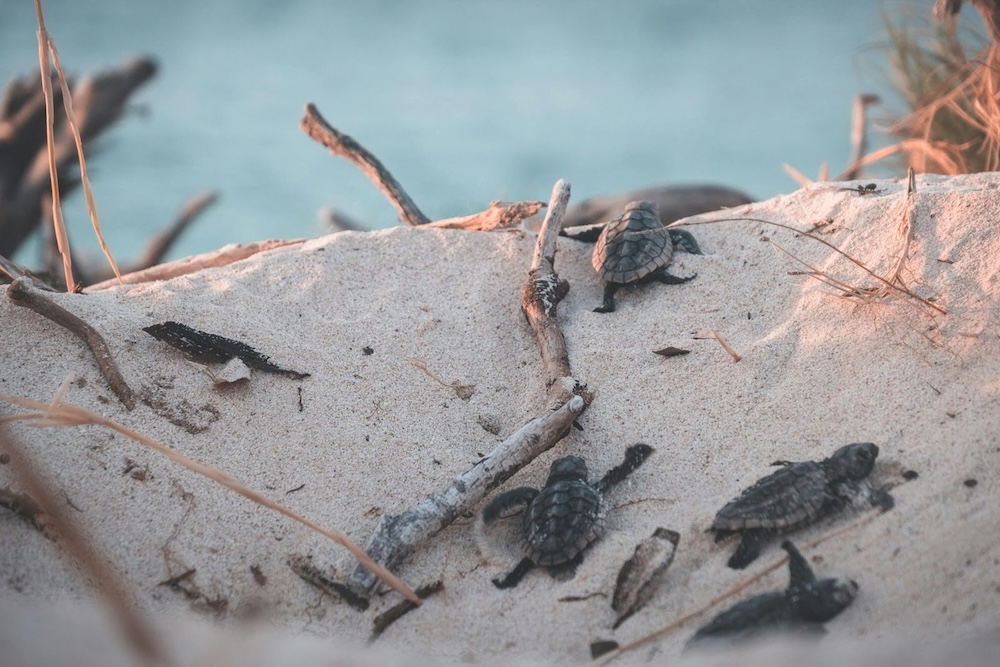Every summer along Oak Island’s coastline when the sun sets and the beaches empty of daytime visitors, sea turtles emerge from the Atlantic to dig their nests and lay their eggs. Oak Island has become one of North Carolina's most important sea turtle nesting destinations, with over 10 miles of beach that provides ideal conditions for nesting females.What makes this even more special is that Oak Island often records the state’s first turtle nest of the season, marking the start of nesting activity along the entire NC coast. From the moment nesting season begins until the last hatchlings make their dash to the ocean, you can anticipate the possibility of a morning walk revealing fresh turtle tracks or the possibility of spotting a nesting female during quiet evenings.
Whether you're a wildlife enthusiast, a family looking to create educational memories, or someone who simply appreciates being in the right place at the right time, understanding turtle nesting season will help you make the most of your Oak Island vacation.
When is Turtle Nesting Season in Oak Island?
Nesting season in Oak Island follows a predictable timeline that typically spans from mid-May through August. June and July are peak nesting months, when most females come ashore to lay their eggs. During these busy weeks, volunteers from the Oak Island Sea Turtle Protection Program conduct daily beach surveys, often discovering multiple new nests in a single morning. If you're visiting during this period, your chances of seeing fresh turtle tracks are highest.
The hatching season begins 53 to 55 days after eggs are laid, meaning that from July through October, you might encounter nesting mothers as well as tiny hatchlings making their first journey to the ocean. Temperature plays a crucial role in timing, as warmer sand speeds up incubation while cooler conditions can extend the process.
What Kinds of Turtles Can Nest in Oak Island?
You’ll primarily find loggerhead sea turtles on Oak Island and the entire NC coast. They are typically 3 feet long and weigh anywhere from 200-400 pounds. They lay an average of 100-120 eggs that are usually the size of ping-pong balls.
Aside from loggerheads, you’ll may occasionally see these species as well:
Leatherback Sea Turtles:
- Largest sea turtle species in the world (up to 2,000 pounds)
- Most ancient sea turtle lineage
- Rarely nest this far north but have been documented
Green Sea Turtles:
- More common in Florida waters
- Sometimes venture north to Carolina beaches as ocean temperatures warm
Kemp's Ridley Sea Turtles:
- World's most endangered sea turtle species
- Very rare in North Carolina waters but documented
- Any sighting is considered significant for research
What to Look For During Nesting Season
The best way to witness turtle nesting season is by observing the signs rather than seeking direct encounters that could disturb their nesting process. Morning beach walks become fascinating detective work as you search for evidence of overnight turtle activity. During your summer vacation, you may see the following signs:
- Turtle tracks that appear as broad, continuous flipper impressions in the sand leading from the dunes and back
- Large circular or oval impressions that indicate nesting sites and body pits. These pits may contain a smaller, deeper hole where the actual egg chamber was located.
- Orange stakes or bright nest markers installed by trained turtle patrol volunteers to confirm nest locations and identify areas for visitors to avoid
The best time to check for evidence of nesting turtles is during an early morning beach walk. Be sure to avoid evening beach activities between 9 PM and 5 AM when turtles are most active to ensure that the turtles complete their nesting undisturbed.
Do Your Part to Keep Nesting Turtles Safe
Following these simple rules ensures that your presence supports a successful turtle nesting season:
Lighting Rules
Remember: Artificial lights disorient both nesting mothers and hatchlings. Follow these lighting rules during your stay.
- Turn off ALL beachfront lights from dusk until dawn during nesting season
- Use blackout curtains or heavy drapes to block indoor light from reaching the beach
- No porch lights, landscape lighting, or any lights visible from the sand
- If safety lighting is absolutely necessary, use amber or red LED lights with shields
Distance and Observation Rules
- Stay at least 20 feet behind any turtle you encounter
- Observe quietly—loud voices and sudden movements can cause false crawls
- Never use flash photography around sea turtles
- Use night mode on cameras or simply enjoy the moment without documenting it
- If you want photos, focus on tracks and signs rather than live animals
No-Touch Policy (Federal Law)
- Never touch nesting turtles or hatchlings—it's illegal and harmful
- Don't pick up or "help" hatchlings reach the water
- Hatchlings must make the journey independently to develop properly
- Physical contact can stress animals and transmit harmful bacteria
Beach Cleanup Rules
- Remove ALL personal items from the beach each evening
- Clear away chairs, umbrellas, toys, and sports equipment
- Fill in holes and level sand castles before leaving
- These obstacles can prevent nesting or trap hatchlings
Emergency Protocol
- If you find a turtle in distress, call the Oak Island Sea Turtle Protection Program immediately
- Don't attempt to help wildlife yourself
- Contact professionals for any turtle sightings during daylight hours
Respect Nest Markers
- Never remove, move, or touch orange stakes and tape
- Keep beach equipment at least 10 feet away from marked nests
- These markers are essential for monitoring nest development and hatch timing
These guidelines aren't just suggestions—they're essential for species survival. Only 1 in 1,000 hatchlings survives to adulthood, making every successful nest critical. Your actions as a visitor directly impact turtle survival rates, and sea turtles are protected by federal, state, and local laws that carry serious penalties for violations.
Observe Nesting Turtles from the Perfect Beachfront Vantage Point
To fully experience the magic of turtle season, consider staying in one of our oceanfront homes or second-row ocean view homes. Our premium oceanfront Oak Island properties put you at the heart of the action while providing the comfort and amenities your family deserves.Get a front-row seat to wake up to the possibility of turtle tracks just steps from your door. If you want to do your part to ensure you’re not disturbing nesting turtles, book a second-row home with an ocean view, so you’re still just a short walk away from the shore.
Your perfect adventure awaits during turtle nesting season in Oak Island—and it starts with the perfect beachfront home base!






